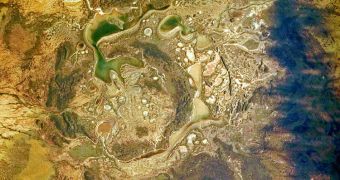A group of investigators from the University of Western Ontario (UWO) and the NASA Lunar Science Institute (NLSI) say that they managed to come up with a new hypothesis for the origins of crater ejecta. These formations are produced from the debris released when a meteorite impacts the ground.
Ejecta are visible more clearly on other planets, since their thinner atmospheres allow for the structures to be preserved for millions of years. Numerous examples are known on Mars, where numerous orbiters have mapped a large part of the planet's surface.
Our solar system is laden with craters and ejecta plumes, especially the planets in the inner solar system. When these objects had just formed, they were battered by a relentless stream of comets and asteroids, during an event known as the Late Heavy Bombardment.
On Earth, many craters were eroded by the elements, as rain, snow and winds made their edges blend with the environment. But other worlds still maintain millions of years-old craters in pristine condition.
The reason why studying ejecta is so important is that samples from these formations will have to be collected during future space exploration missions. Manned expeditions to the Moon, Mars, Mercury and Venus will need to know precisely where to land in order to maximize their scientific return.
Details of the new study appear in the September 21 issue of the journal Earth and Planetary Science Letters, which is edited and published by Elsevier. The investigators were led by UWO professor Gordon Osinski.
His group was responsible for comparing the structures of crater ejecta from all inner rocky planets. The work revealed that all these structures had more than one layer, which means that certain chemicals and isotopes may still be preserved beneath the surface layer.
“Understanding ejecta is critical for understanding the context of samples collected by humans and robots during previous missions and may aid in targeting future sample return missions to the Moon, Mars and beyond,” Osinski explains.
“It is rewarding to see that our international collaborations within the NASA Lunar Science Institute continue to make an impact on current theories and challenge fundamental principles in the field of lunar science,” concludes NLSI Director Yvonne Pendleton.

 14 DAY TRIAL //
14 DAY TRIAL //